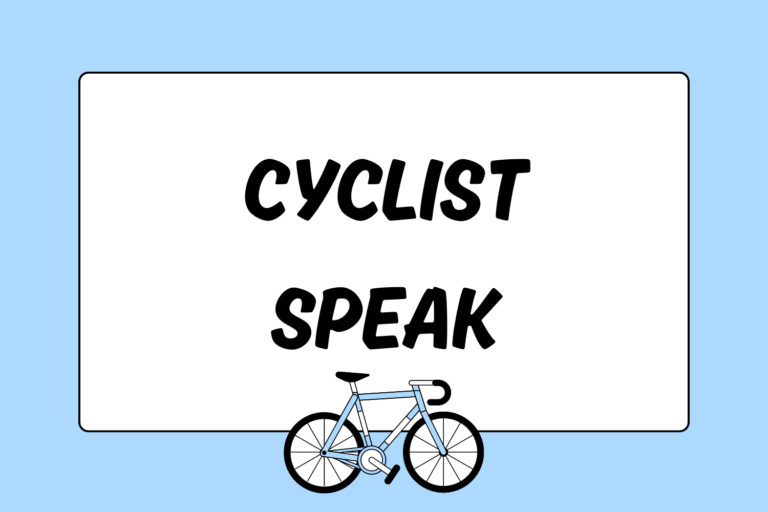Eventually all cyclists, from beginners to pros, need to take the wheels off of their bicycles. Whether to fix a flat tire, put the bike on a car rack, or stuff it into a trunk, taking the wheels off and putting them back on properly and quickly is an essential cycling skill.
Attaching Bicycle Wheels: The Basics
Before you start trying to yank the wheels off, take a moment to familiarize yourself with cycling wheel anatomy. The first thing you will notice is that the wheel is clamped onto the bicycle, most typically with a lever called a quick release. Some bikes (notably track bikes and some very cheap bikes) still have the wheels bolted onto the frame. For purposes of this guide, however, the quick release is the focus.
Next, look at the parts of the bike that the wheel is clamped onto – dropouts. Both front and rear, there are special slots that the wheel slips into and that the quick release clamps onto. On the front, there is a two-pronged element called a fork with dropouts at the tips.
On the rear, the chainstays and seatstays (the tubes that connect the main frame to the rear wheel) join at the rear dropouts. You will notice that on the rear there is also some kind of drive mechanism on the rear wheel, usually a derailleur (for moving the chain) and a cassette (or group of cogs). As a result, installing the rear wheel is different technique than the front.
Next, you’ll see that there are brakes that somehow interact with the rear wheel to slow you down.
Some mountain bikes have disc brakes, and dealing with them is a separate story in itself, so this guide will just focus on brakes that push against the wheel’s rim to slow you down. For either road or mountain bikes, there is a mechanism for opening the brakes up so that the wheel (and more importantly the tire) can pass between the brake pads.
How to Remove & Install A Front Wheel
First, open up the front brake caliper. For road bikes, move the lever on the side 180 degrees until it points upwards. This moves a cam and spreads the brake arms farther apart. On mountain bikes or cyclocross bikes with rim brakes there is typically a slotted portion on the arm.
Once the brakes are open, reach down and open up the quick release. If it was properly closed, it should be fairly difficult to open, so it might take two hands. The quick release clamps the wheel into the frame with a lever that activates a cam.
Now, even though the quick release is open, the front wheel probably still won’t come off. That is because most, if not all, forks include tabs on the dropouts
that keep the wheel attached even if the quick release were to open accidentally. To get the wheel past the tabs, unscrew the nut a few turns from the side opposite the quick release lever. The wheel should drop right out of the forks.
To re-install the front wheel, just reverse the process. Holding the bike by the handlebars in one hand, the wheel (on the ground) in the other hand, line up the fork dropouts with the axle on the front wheel. Slot the axle into the dropouts by pushing the bike down onto the axle. This will ensure that the wheel is properly aligned in the dropouts.
Reach down and turn the nut a few turns and check to see how much pressure you need to close the quick release. If it is too light, screw the nut in a few turns; too heavy, turn it out. You are looking for a level of tension that requires pretty heavy hand pressure to close the lever.
When you close the lever, the cam provides progressively increasing clamping force against the dropouts. This means, however, that unless you close the lever properly, the wheel will not be secured.
Look at the picture – the lever opens and closes in a plane perpendicular to the bike. Notice how the lever has two sides, the outside marked with “Closed” and the inside marked with “Open.” This means the only way to get “Closed” to show is to properly close the quick release lever.
After you close it, the lever should leave an impression in your palm.
And make sure that the lever is fully closed – it should be flush (that is parallel) with the forks as the photo shows. As you close the lever, align it so that it is pointing upwards and in line with the fork – you do not want the lever sticking out where it could snag on something and pop open.
All you have to do now is spin the wheel to make sure it is centered in the dropouts. If it’s not, open the quick release, re-center and close the quick release again. Once centered, close the brakes and you are ready to go.
Lawyer Tabs?
Forks almost always have tabs that prevent the wheel from falling out. Why? Because some people rode with their quick releases improperly closed and the wheel came off. A series of lawsuits held bicycle companies liable for this operator error. So, to save cyclists from their own negligence all forks now have what cyclists call “lawyer tabs” or “lawyer lips.”
Close Your Quick Release
Do not, whatever you do, just spin the lever to tighten it – if you do this, then “Open” will continue to show on the lever. This is not how a quick release works; the lever is not there to act as a wrench for tightening the wheel into the frame like a nut on a bolt. If you just spin the lever without closing it the wheel will not be properly secured to the frame and could come loose while riding. Even with the tabs on the fork dropouts (and there are no tabs on the rear dropouts) a loose wheel could spell catastrophe.
How to Remove & Install the Rear Wheel
Unlike the front wheel, the rear wheel connects to the drive train. So removal means disconnecting the cassette from the chain. Before getting too discouraged, it’s actually easy, with just a few extra steps to take.
First, using the rear (or right) shifter, click the shifter until it is in the hardest possible gear. Usually this involves clicking a smaller button or lever that releases the cable attached to the rear derailleur, letting it move to the smallest cog. Lift up the rear of the bike by holding onto the saddle and turn the pedals forward until the chain drops onto the smallest cog.
Look at the photo – you can see that the chain is all the way on the right side of the cassette, closest to the dropout. This does two things. First, it makes it easier to take the wheel out since the smaller cog has less chain wrapped around it. Also, it makes re-installing the wheel easier since you always know that the derailleur is lined up with the smallest cog.
Okay, with the chain now properly set up, open the rear brake and undo the rear quick release using the same method as for the front wheel. There are no tabs on the rear dropouts, so don’t worry about adjusting the nut. Now, holding onto the saddle lift the rear wheel off the ground again – the wheel will most likely still be in the frame, held in place by the chain. If it does fall out, great. If not, pull back on the derailleur by grabbing the bottom pulley to free the wheel. Then bang the wheel free by hitting the tire at the top of the wheel. With the wheel loose, just wiggle it free of the chain and you are good to go.
Put the Wheels Back On and Roll!
To reinstall, reverse the process. It takes a little practice to get the balance right, but it’s really not that hard. Lift the rear of the bike by the saddle and position the bike over the rear wheel so that the chain drapes over the smallest cog – see the picture for an example. At this point you should start to put the wheel into the frame by pushing down on the bike – you might need to pull the derailleur back again to make sure the chain stays properly aligned. It takes a little pressure, so don’t be daunted – just give the wheel a solid push and it should slot into the dropouts. Align the wheel, snug up the quick release and close the brakes. Lift the rear wheel again and turn the cranks to make sure the chain is settled in, and shift into the gear you want and you’re ready to go!




